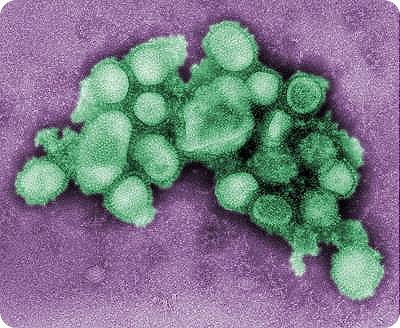May 20 2009
The ability to mount an immune response to influenza A (H1N1) infection is significantly compromised by a low level of arsenic exposure that commonly occurs through drinking contaminated well water, scientists at the Marine Biological Laboratory (MBL) and Dartmouth Medical School have found.
Joshua Hamilton, the MBL's Chief Academic and Scientific Officer and a senior scientist in the MBL's Bay Paul Center; graduate student Courtney Kozul of Dartmouth Medical School, where the work was conducted; and their colleagues report their findings this week in the journal Environmental Health Perspectives.
"When a normal person or mouse is infected with the flu, they immediately develop an immune response," says Hamilton, in which immune cells rush to the lungs and produce chemicals that help fight the infection. However, in mice that had ingested 100 ppb (parts per billion) arsenic in their drinking water for five weeks, the immune response to H1N1 infection was initially feeble, and when a response finally did kick in days later, it was "too robust and too late," Hamilton says. "There was a massive infiltration of immune cells to the lungs and a massive inflammatory response, which led to bleeding and damage in the lung." Morbidity over the course of the infection was significantly higher for the arsenic-exposed animals than the normal animals.
Respiratory infections with influenza A virus are a worldwide health concern and are responsible for 36,000 deaths annually. The recent outbreak of the influenza A H1N1 substrain ("swine flu") - which is the same virus that Hamilton and his colleagues used in their arsenic study - to date has killed 72 people in Mexico and 6 in the United States. 
"One thing that did strike us, when we heard about the recent H1N1 outbreak, is Mexico has large areas of very high arsenic in their well water, including the areas where the flu first cropped up. We don't know that the Mexicans who got the flu were drinking high levels of arsenic, but it's an intriguing notion that this may have contributed," Hamilton says.
The U.S. Environmental Protection Agency considers 10 ppb arsenic in drinking water "safe," yet concentrations of 100 ppb and higher are commonly found in well water in regions where arsenic is geologically abundant, including upper New England (Massachusetts, New Hampshire, Maine), Florida, and large parts of the Upper Midwest, the Southwest, and the Rocky Mountains, Hamilton says.
Arsenic does not accumulate in the body over a lifetime, as do other toxic metals such as lead, cadmium, and mercury. "Arsenic goes right through us like table salt," Hamilton says. "We believe for arsenic to have health consequences, it requires exposure day after day, year after year, such as through drinking water."
Arsenic exposure not only disrupts the innate immune system, as the present study shows, it also disrupts the endocrine (hormonal) system in an unusually broad way, which Hamilton's laboratory discovered and first reported in 1998.
"Most chemicals that disrupt hormone pathways target just one, such as the estrogen pathway," he says. "But arsenic disrupts the pathways of all five steroid hormone receptors (estrogen, testosterone, progesterone, glucocorticoids, and mineralocorticoids), as well as several other hormone pathways. You can imagine that just this one effect could play a role in cancer, diabetes, heart disease, reproductive and developmental disorders–all the diseases that have a strong hormonal component."
At this point, Hamilton thinks arsenic disrupts the innate immune system and the endocrine system through different mechanisms. "Arsenic may ultimately be doing a similar thing inside the cell to make these effects happen, but the targets are likely different," he says. The proteins that mediate hormone response are different than the proteins that mediate the immune response. "We don't yet know how arsenic disrupts either system at the molecular level. But once we know how it affects one system, we will have a pretty good idea of how it affects the other systems as well."
Presently, Hamilton's lab is focused on understanding the unusual "biphasic" effect that arsenic has on the endocrine system. At very low doses, arsenic stimulates or enhances hormone responses, while at slightly higher doses (still within the range found in drinking water), it suppresses these same hormone responses.
"Why we see that dramatic shift (from hormone enhancement to suppression) over such a narrow dose range is quite fascinating and totally unknown," Hamilton says. "Our principal focus is to figure out this switch. We think that will help us understand why arsenic does what it does in the body."
http://www.mbl.edu